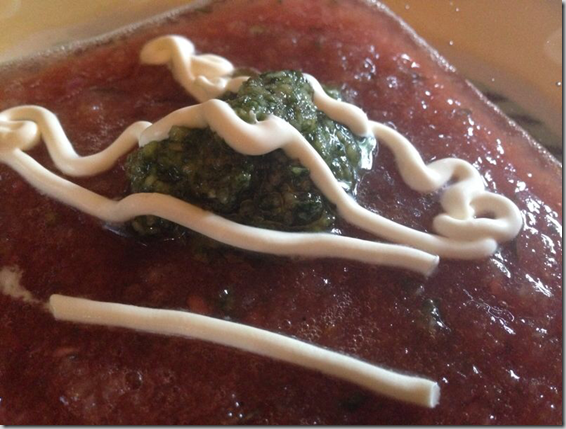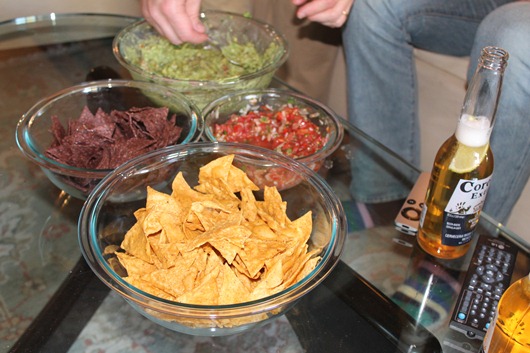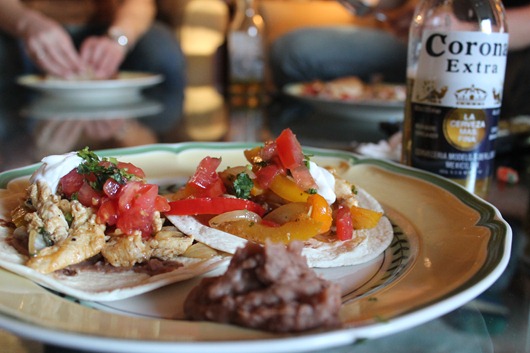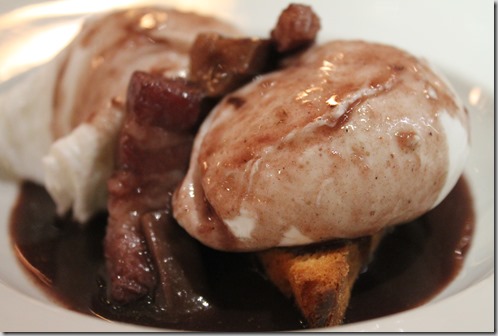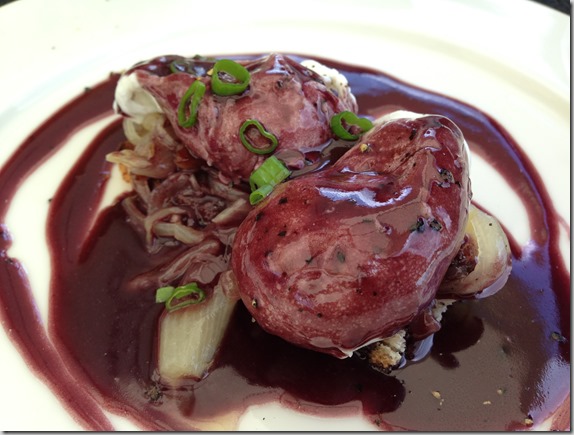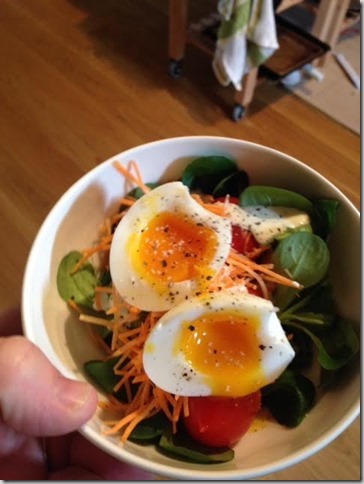Nothing screams summer quite like a cold soup and when I think of cold soup, I think of gazpacho.
Now, I know that there are other cold soups: cucumber, melon, vichyssoise, the list goes on. That said, gazpacho has always been my favorite. The ripe summer tomatoes, the slight spice, and the complexity of the herbs and vegetables all complement each other perfectly. Add the fact that this soup is, by its very nature vegan, raw and can be gluten-free, and you have the perfect healthy dish for any hot summer day.
Many of you may know that gazpacho comes in many forms. There are variations with melon, various types of citrus, yellow tomatoes (if you can find them this is a beautiful soup) and many other twists on the basic formula. In addition, the garnishes can be simple (one piece of cilantro for example) or more complex (last night’s had a cilantro pesto (Spanish variation on the Italian classic) along with some crème fresh). Also, the consistency of gazpacho varies significantly. You can find gazpacho that is chunky and crunchy where you will actually end up chewing the soup, or smooth and totally pureed.
Personally, I prefer smooth gazpacho not only because the flavors blend better but the prep work is also much easier as long as you have a good blender (you don’t have to chop the veggies in even pieces for example).
Below you’ll find the recipe for last night’s gazpacho and the pesto garnish. Just as a note, I omitted the EVOO and the bread to keep it healthy and gluten-free. Enjoy!
One final thing – a quick trick to peel tomatoes: bring a pot of water to boil, cut X’s in the bottom of the tomatoes with a paring knife and plunge them in the water for 30 sec to 1 min. When they come out, you should be able to pull the skin easily from the bottom of the tomato.
Ingredients:
For the gazpacho:
10 medium ripe tomatoes, peeled and chopped
1 medium red onion, chopped
1 cucumber, peeled, seeded, chopped
1 red or yellow bell pepper seeded and chopped
2 stalks celery, chopped
2 Tbsp chopped fresh parsley
2 Tbsp chopped fresh chives
1 clove garlic, minced (use of a garlic press is okay)
1/4 cup red wine vinegar
1/4 cup olive oil (optional)
1/4 cup of day old bread to thicken (optional)
2 Tbsp freshly squeezed lemon juice
2 teaspoons sugar
Salt and fresh ground pepper to taste
A few drops of Tabasco sauce to taste
For the pesto:
2 cups of cilantro leaves packed
1/3 cup raw white almonds (don’t use the type with brown skin – if you can’t find white almonds use pine nuts)
1/4 cup EVOO (plus more if needed)
salt and pepper to taste
Preparation (this is the easy part):
For the gazpacho:
Combine all ingredients in a blender and blend until smooth.
For the pesto:
Combine all ingredients in a small food processor and mix until smooth.
Serving:
Put a serving of gazpacho in a bowl. Top with one spoonful of pesto and one of crème fresh.
Do you have any gazpacho variations or garnishes that you particularly enjoy?

